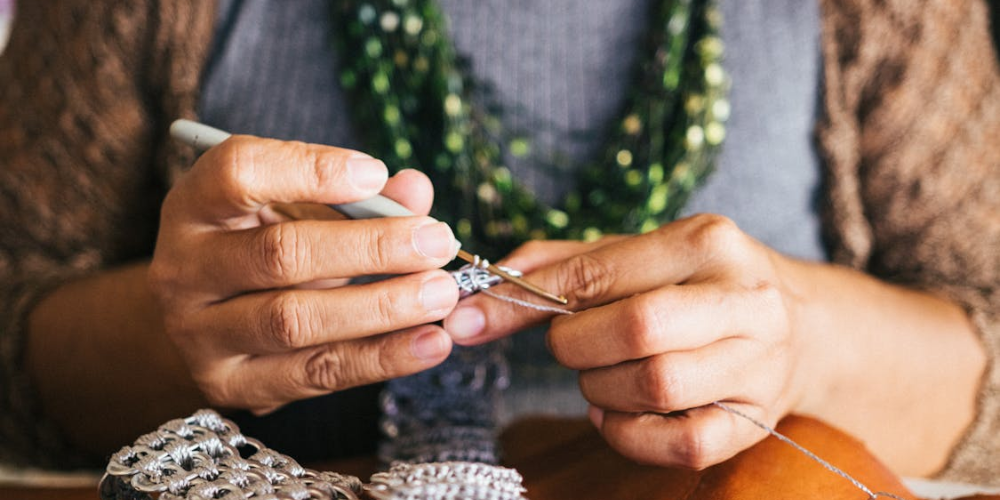Introduction to Crochet
Crochet, a timeless craft, involves creating fabric from yarn using a hook. It’s a versatile and enjoyable hobby that allows individuals to unleash their creativity. Dating back centuries, crochet has evolved into various techniques and styles, captivating crafters worldwide.

Essential Crochet Supplies
To embark on your crochet journey, you’ll need a few basic supplies. Firstly, yarn is the essential material for crocheting. Choose a yarn suitable for beginners, such as medium-weight acrylic or cotton yarn. Secondly, invest in a set of crochet hooks. They come in different sizes, denoted by letters or numbers, and you’ll typically need a size recommended for your yarn weight. Lastly, stitch markers are handy tools for keeping track of your stitches, especially in complex patterns.
Basic Crochet Stitches
Understanding fundamental crochet stitches is crucial for beginners. The chain stitch (Ch) serves as the foundation for most projects, followed by the single crochet (Sc) and double crochet (Dc) stitches. Mastering these stitches forms the basis for more intricate patterns.
Reading Crochet Patterns
Deciphering crochet patterns may seem daunting at first, but with practice, it becomes easier. Pay attention to abbreviations commonly used in patterns and familiarize yourself with crochet symbols and diagrams. These visual aids provide step-by-step instructions for creating various stitches and motifs.
Starting Your First Crochet Project
Embarking on your first crochet project is an exciting milestone. Begin by selecting a beginner-friendly pattern, such as a simple scarf or dishcloth. Consider factors like yarn weight, color, and texture when choosing materials. Start with a larger hook size to facilitate learning and gauge tension more easily.
Holding the Crochet Hook and Yarn
Proper hand placement and tension control are essential for comfortable crocheting. Hold the crochet hook like a pencil or knife, whichever feels more natural to you. Maintain a relaxed grip to prevent hand fatigue and adjust your tension to achieve uniform stitches.
Practice Makes Perfect
Like any skill, crochet requires practice and patience. Start with small, manageable projects to build confidence and improve your technique gradually. Don’t be discouraged by initial mistakes; instead, view them as learning opportunities and keep persevering.
Troubleshooting Common Crochet Mistakes
Even seasoned crocheters encounter challenges from time to time. Uneven tension, miscounted stitches, and dropped stitches are common pitfalls. Learn to identify and rectify these mistakes early on to maintain the integrity of your project.
Finishing Techniques
Completing a crochet project involves several finishing techniques. When finishing off, or fastening off, trim the yarn and secure it to prevent unraveling. Use a yarn needle to weave in loose ends neatly, ensuring a polished final appearance.
Adding Embellishments
Embellishments like tassels and pom-poms add flair to your crochet creations. Experiment with different yarn colors and textures to customize your projects. Online tutorials offer step-by-step instructions for creating various embellishments.
Joining Yarn
When working on larger projects or changing colors, knowing how to join yarn seamlessly is essential. Techniques like the magic ring method and knotting ensure smooth transitions between yarns, resulting in clean, professional-looking finishes.
Washing and Blocking Finished Projects
Proper care ensures the longevity of your crochet projects. Follow manufacturer recommendations for washing and blocking to maintain their shape and integrity. Invest in blocking tools like blocking mats and T-pins for more intricate designs.
Crochet Communities and Resources
Joining crochet communities provides invaluable support and inspiration. Online forums, social media groups, and local meetups connect you with fellow enthusiasts who share tips, patterns, and project ideas. Explore reputable crochet blogs and websites for tutorials, patterns, and product reviews.
Advanced Crochet Techniques
Once you’ve mastered the basics, explore advanced crochet techniques to broaden your skills. Tunisian crochet and the crocodile stitch are examples of more intricate techniques that yield stunning results. Challenge yourself with new stitches and patterns to elevate your craft.
Conclusion
Mastering the basics of crochet opens up a world of creativity and self-expression. With patience, practice, and perseverance, beginners can develop their skills and create beautiful handmade pieces. Remember to enjoy the journey and embrace the learning process, knowing that every stitch brings you closer to mastery.
FAQs (Frequently Asked Questions)
- Is crochet difficult to learn for beginners? Crochet can seem daunting at first, but with dedication and practice, beginners can grasp the basics relatively quickly.
- What supplies do I need to start crocheting? Essential supplies include yarn, crochet hooks, and stitch markers. Additional tools like yarn needles and blocking mats may be beneficial for more advanced projects.
- How do I fix mistakes in my crochet work? Common mistakes like dropped stitches or uneven tension can be rectified with patience and practice. Online tutorials and crochet resources offer helpful tips for troubleshooting.
- Can I crochet without a pattern? While patterns provide guidance and structure, experienced crocheters often create their designs or modify existing patterns to suit their preferences.
- Is crochet an expensive hobby? Crochet can be as affordable or as lavish as you choose. Basic supplies are relatively inexpensive, but costs may vary depending on the quality of materials and complexity of projects.
